How to Get Rid of Clover in Lawn Without Killing Your Grass
- March 8, 2024
- 3 comment
Clover, with its distinctive trifoliate leaves and white blossoms, can be both a blessing and a bane to gardeners and lawn enthusiasts alike. While some appreciate its resilience and nitrogen-fixing ability, others see it as a relentless invader, detracting from the uniform green they strive for in their lawns. If you’re in the latter camp, struggling with clover’s stubborn persistence, this comprehensive guide will arm you with the knowledge and strategies you need to reclaim your verdant oasis.
Understanding Clover
What is Clover?
Clover, scientifically termed Trifolium, is more than just the quintessential symbol of good luck. This genus encompasses over 300 species, each recognized by its distinctive trifoliate (three-leaf) arrangement. While the romantic notion of finding a four-leaf clover persists in folklore, in the realm of gardening and lawn care, clover is often less celebrated. Its resilience and ability to adapt to various environments make it a common, though uninvited, guest in lawns across the globe.
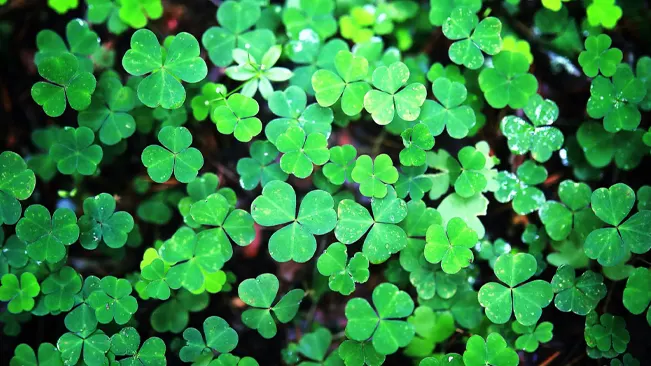
Clover’s hardiness is both a boon and a bane. On one hand, it can thrive in conditions where more delicate plants might falter, contributing to the biodiversity and ecological health of an area. On the other hand, its vigor makes it a formidable opponent in the quest for a uniform, grass-only lawn. Its rapid spread and tendency to outcompete grasses can quickly transform a manicured lawn into a patchwork of green and clover. Despite its reputation as a lawn weed, clover is not without its charms. Its flowers, ranging from white to pink and even red, can add unexpected splashes of color to a green expanse and attract a variety of pollinators, contributing to the health of the local ecosystem.
Why Does it Appear in Lawns?
The ubiquity of clover in lawns is no accident. Clover seeds, which are incredibly hardy, can lie dormant for years before finding the right conditions to germinate. They can be introduced through various means, including wind, animals, and even contaminated soil or lawn care products.

Clover’s emergence in a lawn often serves as a barometer for the soil’s health, particularly its nitrogen content. Nitrogen is a critical nutrient for plants, acting as a key component of chlorophyll, the molecule that gives plants their green color and plays a vital role in photosynthesis. When nitrogen levels in the soil are low, grasses can struggle to maintain their vigor and density, creating opportunities for clover to gain a foothold. What sets clover apart from many other plants is its ability to “fix” nitrogen from the air. Thanks to a symbiotic relationship with certain bacteria in its root system, clover can convert atmospheric nitrogen into a form that plants can use. This natural fertilization process can improve soil fertility over time, making clover a double-edged sword: while it competes with grass for space and resources, it also enriches the soil, potentially benefiting the lawn in the long run.
How To Get Rid of Clover
1. Improve Lawn Health
- Adjust Soil pH: Clover thrives in low nitrogen levels and poor soil conditions. Test your soil’s pH and adjust it according to the needs of the grass you’re growing. Most grasses prefer a slightly acidic to neutral pH (between 6.0 and 7.0).
- Fertilize Appropriately: Use a nitrogen-rich fertilizer to address nutrient deficiencies, which can help grass to outcompete clover.
- Aerate the Soil: Compacted soil favors clover over grass. Aerating your lawn can improve water, nutrient, and oxygen flow to the grass roots, enhancing their growth.
2. Cultural Practices
- Mow at the Right Height: Keep your lawn at an appropriate height, which for most grass types is about 2.5 to 3 inches. Taller grass shades the soil, reducing clover seed germination and growth.
- Water Deeply and Less Frequently: Deep, infrequent watering encourages grass roots to grow deeper, making them more resilient and competitive against clover.
- Overseed: Introduce more grass seeds to your lawn, especially in bare spots, to prevent clover from taking over those areas.
3. Natural Removal Techniques
- Hand Weeding: For small infestations, hand-pulling clover is effective. Ensure you remove the roots to prevent regrowth.
- Vinegar Solution: A natural herbicide, vinegar can kill clover. Mix one part water with one part vinegar and spray directly onto the clover. Be cautious, as vinegar can also harm grass and other plants.
- Corn Gluten Meal: As a pre-emergent herbicide, corn gluten meal can prevent clover seeds from germinating. Apply in early spring before the clover seeds germinate.
4. Chemical Solutions
- Selective Herbicides: If natural methods are ineffective, consider using a selective herbicide that targets broadleaf plants like clover without harming grass. Look for products containing the active ingredients like MCPP, dicamba, or triclopyr. Always follow the manufacturer’s instructions for application and safety.
5. Maintaining a Clover-Free Lawn
- Regular Monitoring: Keep an eye on your lawn for early signs of clover and address them promptly before they spread.
- Maintain Good Lawn Practices: Continue with proper mowing, watering, and fertilizing practices to keep your lawn healthy and less inviting to clover.
Natural Removal Techniques
1. Hand Weeding

Hand weeding is a straightforward and environmentally friendly approach to removing clover from your lawn. It is particularly effective when the soil is moist, allowing the roots to be pulled out more easily. When hand weeding, it’s crucial to remove as much of the root system as possible to prevent the clover from regrowing. Employing a weeding tool can facilitate the removal of the entire root, making this process more efficient.
2. Vinegar Solution
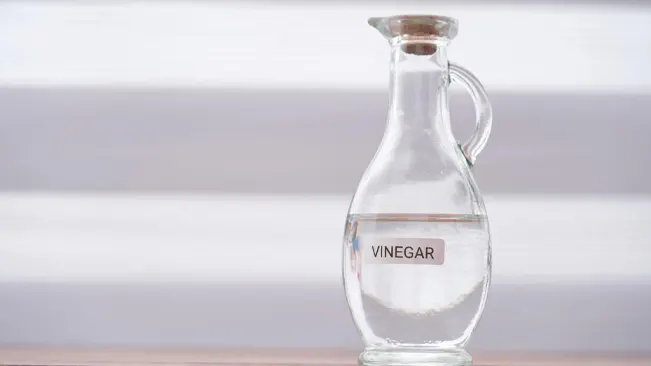
Vinegar serves as a natural herbicide due to its acetic acid content. Creating a mixture of one part water and one part white vinegar can produce a solution capable of killing clover. When applying this solution, it’s important to spray it directly onto the clover, taking care to avoid contact with desirable plants and grass, as vinegar can damage them. The best time to apply this solution is on a sunny day, as the combination of vinegar and sunlight will enhance the weed-killing effect.
3. Corn Gluten Meal

Corn gluten meal acts as a natural pre-emergent herbicide, preventing clover seeds from germinating. It is a byproduct of corn milling and contains nitrogen, which can also serve as a fertilizer for your lawn. The application of corn gluten meal should be done in early spring, prior to the germination of clover seeds. It’s important to follow the package instructions for the correct application rate. Note that achieving significant results may require multiple applications over several seasons, as corn gluten meal gradually reduces the seed bank in the soil.
4. Boiling Water
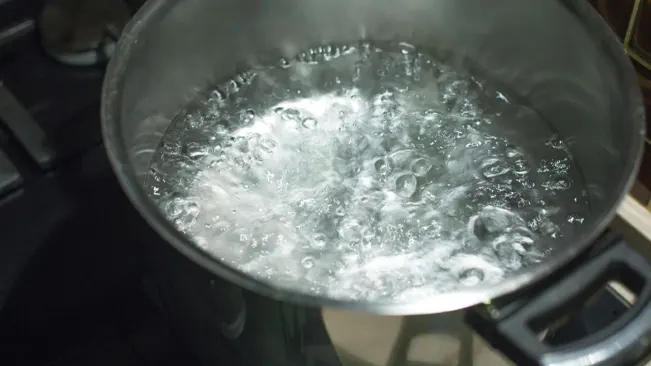
Applying boiling water directly onto clover patches offers an immediate, albeit temporary, solution to kill clover. The extreme heat from the boiling water effectively kills the plants and can aid in root removal. However, caution is advised when handling and pouring boiling water to prevent burns. Additionally, this method may also harm surrounding grass and plants, so it should be used with precision and sparingly.
5. Soap and Water Solution

A solution of mild soap and water can assist in clover removal by breaking down the waxy surface of the leaves, making the plant more susceptible to dehydration. Mixing a few drops of dish soap with water in a spray bottle creates an effective mixture that can be applied to the clover. This method is most effective on hot days when the added stress of soap can expedite the dehydration process.
Nitrogen Boost
Organic Fertilizers
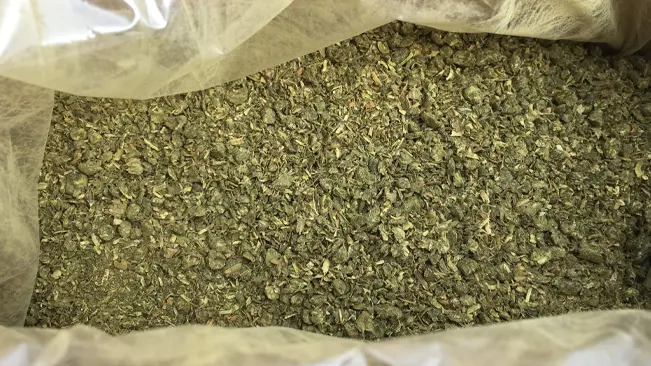
Organic fertilizers are a natural way to boost soil nitrogen and improve lawn health. They slowly release nitrogen, providing a steady nutrient supply without the fluctuations common with synthetic fertilizers. Key options include blood meal, a high-nitrogen powder from dried animal blood, ideal for quick soil enrichment. Fish emulsion, derived from processed fish, offers a significant nitrogen boost along with other nutrients, despite its strong smell. Alfalfa meal, from ground alfalfa plants, also enhances soil nitrogen and overall fertility. Using these organic fertilizers can help achieve a lush and eco-friendly lawn.
Composting
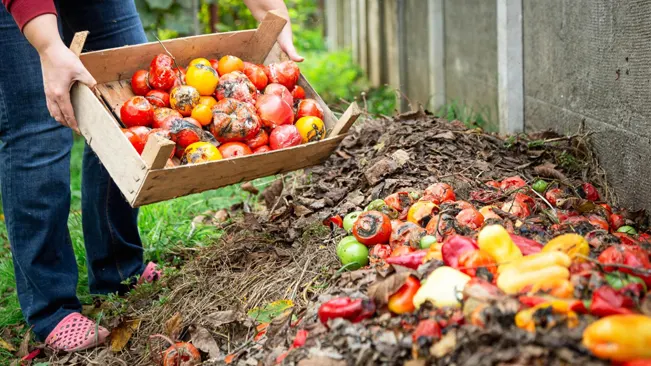
Composting is a remarkably effective and environmentally friendly method for enriching the nitrogen content of your lawn’s soil, contributing significantly to its overall health and vitality. The process involves the biological decomposition of organic matter, such as kitchen scraps (like fruit and vegetable peels, coffee grounds, and eggshells) and yard waste (including leaves, grass clippings, and small branches), resulting in a nutrient-rich substance known as compost.
Nitrogen-Rich Lawn Treatments
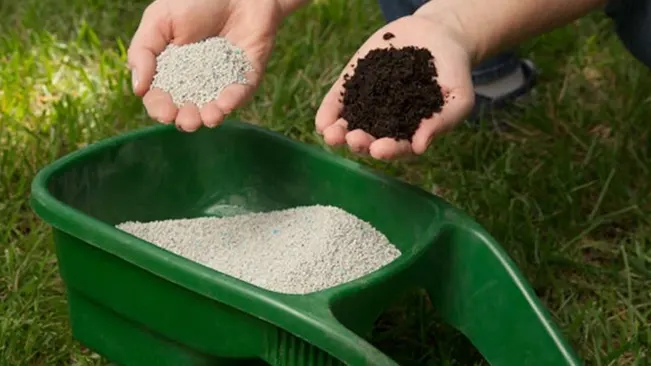
Synthetic nitrogen fertilizers are crucial for a healthy, lush lawn, available as quick-release for instant greening and growth, or slow-release for steady nourishment. Liquid nitrogen fertilizers, applied with a sprayer, offer fast, even distribution and absorption, ideal for correcting specific nutrient deficiencies. Choosing the right type depends on your lawn’s immediate needs and long-term care objectives, ensuring vibrant growth and optimal lawn health.
Grasscycling
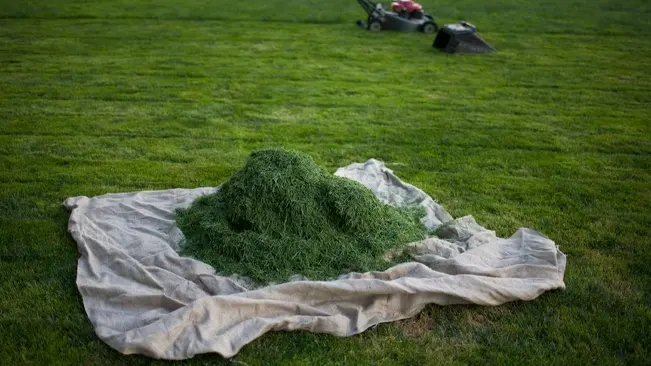
Grasscycling, the practice of leaving grass clippings on the lawn after mowing, is a time-saving method that naturally recycles nutrients, particularly nitrogen, back into the soil. As clippings decompose, they fertilize the lawn, enhancing soil moisture retention, improving soil structure, and contributing to a more resilient grass. This eco-friendly approach reduces yard waste and its associated environmental impact, promoting a healthier, greener lawn with minimal effort.
Chemical Solutions
When natural remedies fall short in controlling clover, chemical solutions, specifically selective herbicides, offer a targeted approach. These herbicides are designed to eliminate broadleaf weeds like clover without damaging the grass, thanks to active ingredients such as 2,4-D, MCPP, dicamba, and triclopyr. These compounds disrupt weed growth patterns, leading to their demise while preserving the lawn. It’s crucial to select products intended for lawn use to safeguard the grass and nearby flora.
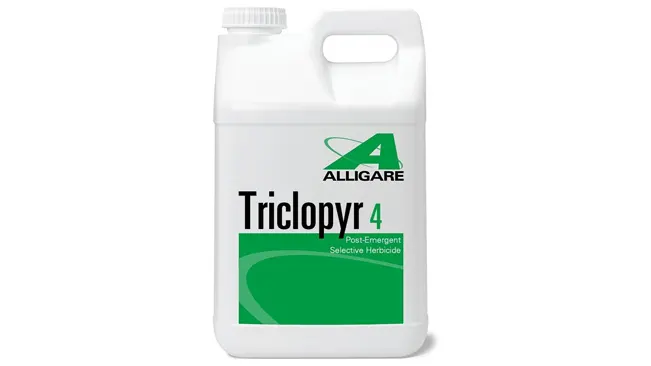
Applying chemical herbicides demands caution and adherence to the manufacturer’s guidelines on mixing, dosage, and safety measures. Optimal application times are in mild weather when clover is in its active growth phase, typically late spring or early fall. This timing ensures the herbicide is effectively absorbed, enhancing its weed-killing efficacy. Using chemical herbicides necessitates safety precautions, including wearing protective gear to prevent skin and eye exposure. It’s also important to keep children and pets away from treated areas until they’re dry and to avoid herbicide use near water bodies to prevent pollution. Although chemical methods are effective in clover eradication, their environmental impact and risks to non-target species make them a last-resort option, best used in conjunction with other weed management strategies for a healthy, clover-free lawn.
Regular Monitoring and Quick Action
Frequent monitoring of your lawn is key to identifying and addressing clover infestations early. Quick action is crucial; removing clover manually or treating small patches with natural or chemical solutions as soon as they appear can prevent them from spreading.
Lawn Health Improvement
- Proper Fertilization: Use a balanced fertilizer that suits your lawn’s specific needs, focusing on providing enough nitrogen to support healthy grass growth.
- Adequate Watering: Water your lawn deeply but infrequently to encourage deep root growth, which makes your lawn more resilient against weeds and drought.
- Regular Mowing: Mow your lawn at the appropriate height for your grass type, which typically means not cutting off more than one-third of the grass blade at a time. This helps maintain a dense lawn that can outcompete clover and other weeds.
Conclusion
In conclusion, effectively managing clover in your lawn involves a balanced approach that includes understanding the plant’s biology, improving lawn health, employing natural and chemical removal techniques, and maintaining consistent lawn care practices. While clover can bring certain benefits to your lawn, such as nitrogen fixation, its rapid spread and potential to dominate can detract from the aesthetic and uniformity of a grassy landscape. Natural methods like hand weeding, vinegar solutions, and promoting healthy soil can be effective for small infestations and those seeking eco-friendly solutions. For more persistent problems, selective herbicides offer a targeted approach, though they should be used judiciously, considering the environmental impact. Ultimately, a healthy, dense lawn that is well-cared for is the best defense against clover and other weeds. Regular mowing, proper fertilization, and adequate watering create unfavorable conditions for clover, encouraging a lush, vibrant lawn that is both beautiful and sustainable.
FAQs
- Can clover be beneficial to my lawn?
Yes, clover can be beneficial as it fixes nitrogen from the air, enriching the soil naturally, which supports grass growth. It’s also drought-resistant and can stay green, adding to your lawn’s aesthetics during dry spells. - What is the best time of year to treat clover on my lawn?
The optimal time for treating clover is during its active growth periods, typically in late spring or early fall. This ensures that any treatments, whether natural or chemical, are most effective. - Are there any natural methods to remove clover without harming my lawn?
Yes, there are several natural methods, including hand weeding, applying a vinegar solution, or using corn gluten meal as a pre-emergent herbicide. These methods can minimize clover without adverse effects on your lawn grass. - How long does it usually take to see results after treating clover?
The time frame can vary depending on the treatment method. Natural remedies might take longer, several weeks to months, while chemical herbicides can show results within days to a couple of weeks. - Is it necessary to completely remove clover from my lawn?
Not necessarily. Some homeowners choose to keep clover in their lawns due to its benefits. It’s a personal preference, depending on your lawn care goals and the aesthetic you desire for your outdoor space.
We hope these tips help you tackle clover in your lawn effectively while keeping your grass healthy and vibrant. Have you tried any of these methods, or do you have other tricks to share? Drop a comment below—we’d love to hear about your experiences and learn from each other!

Joel Cunningham
Forestry AuthorI'm Joel Cunningham, an expert in pruning and weed management with over a decade of experience. My skills are rooted in formal training and extensive practice, focusing on advanced pruning techniques and efficient weed control. I'm known for my quality work, precision, and deep understanding of plant health and soil dynamics. My contributions extend to educational initiatives where I share sustainable practices and advice, establishing myself as a reliable and authoritative figure in the gardening community.
3 comments
Good morning Joel, eould adding lime to the soil once aerated help with a clover infestation. Does leaving the mixed grass in the lawn with clover seeds not create another monster problem? Thanks kindly
Sue
March 10, 2024 8:09 amApplying lime to soil post-aeration can aid in addressing clover infestations by optimizing pH levels for grass growth, provided soil tests indicate necessity. To prevent clover spread, avoid grasscycling when clover seeds are mature, resuming once infestation is controlled.




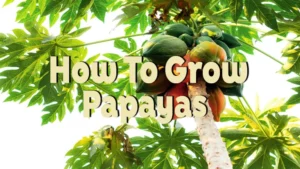


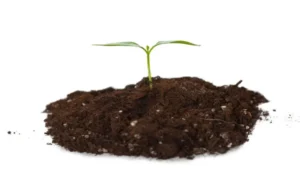





Thank you for the article on Clover LOL I have been calling it crabgrass for 50yrs .
Lucy Hyler
June 19, 2024 3:00 am